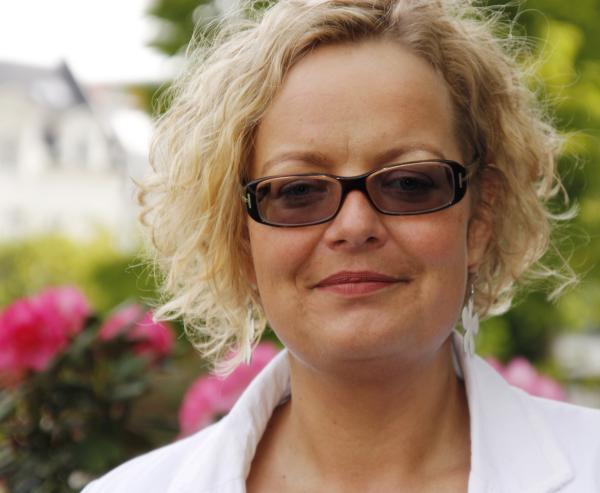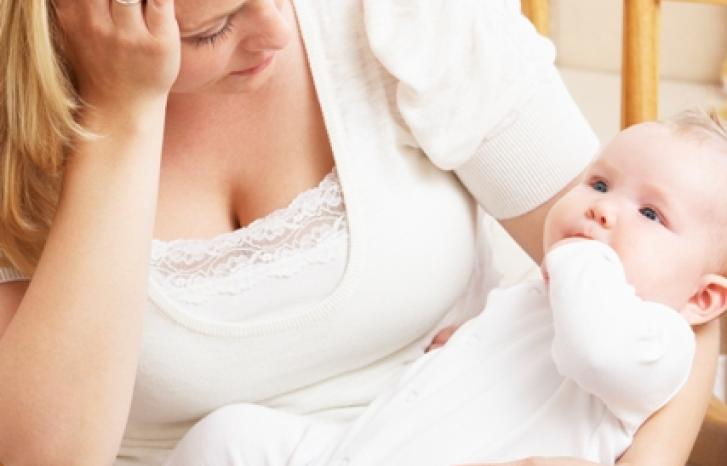“We were happy to see a lively little chap, but the midwife grew serious very quickly. ‘There is an accumulation of fluid in the neck that should not be there. And I see only three chambers of the heart … I will ask one of the doctors to look at this.’ It was as if my blood froze there and then. I think I understood immediately that this was not going to end well.” (“Elin”)
“Elin” was having the routine ultrasound examination offered to all women in week 18 of pregnancy when it was discovered that the foetus she was carrying had a serious heart malfunction and other deformities. This discovery meant that “Elin” had to take what she perceived to be an exceedingly painful, gruelling decision. Should she terminate the pregnancy or not?
“At the limit of what a person can bear”
Each year several hundred Norwegian women face the choice between having a late-term abortion or keeping a foetus that they know will not be born healthy. There are no solid statistics, but it is estimated that roughly 250 of these women choose to have a selective abortion – an abortion due to a documented abnormality in the foetus. These cases may comprise up to 98-99 percent of the proven abnormalities. Before taking such a decision, most of the women go through a process “at the limit of what a person can bear,” according to the researcher.
As part of her doctoral thesis, Risøy interviewed 23 women about their experiences with prenatal diagnostics and selective abortion. Almost all of them found it to be an exceedingly difficult choice, describing the process as a “state of emergency”, something surreal and removed from normal life.
“Nothing or nobody can tell them what they should do. All the compelling considerations can be used to argue both for and against abortion. For instance, does the woman put consideration for the child first by allowing the baby to live or by sparing it from a life of pain and ostracism? Is the woman being the best mother possible by caring for a sick child or by sparing the children she already has from the burden of a sibling who demands so much from the parents? Both having an abortion and not having one could be the right choice. It is not the argument per se, but the fact that the woman has the freedom to make her own decision that is paramount,” says Risøy.
She believes that society expects the woman to have moral qualms about her decision.
“The women’s doubt, pain and sorrow help to make the decision more moral in the eyes of society as well as her own,” says Risøy.
Impossible choice
“I was ready to go through with it when she said that she didn’t know if my baby was in pain. I didn’t want my child to suffer, especially when it wasn’t possible to save him. If something could have been done to make my baby healthy, then maybe, but that wasn’t the case. I have always opposed abortion and never thought that I would face an impossible choice like this.” (“Kjersti”)
Kjersti learned that her foetus had Trisomia 18, a serious genetic disorder characterized by psychomotor disability, growth deficiency and numerous malformations of the organs. Most babies born with Trisomia 18 die within the first year of life.
Many of the women were told that their foetus had abnormalities that were “not conducive to life” or, as in Kjersti’s case, that it was likely the baby would have a short lifespan with many health problems. “Reidun” says:
“I didn’t feel it was right for me or for my child. After all, my child never asked to be born. And if she had been born with serious deformities and only suffered during her short life, I couldn’t bear to live with that.”
“When the foetus is so seriously deformed, it is easier to understand that the woman chooses abortion in order to be a ‘good mother’. She does it for the sake of her child, to protect her child from meaningless pain and suffering,” explains Risøy.
Normal or abnormal?
Aborting a foetus with a less serious diagnosis is more difficult to incorporate into the “good mother” argument, according to Risøy. For example, in many cases a child with Down syndrome may experience less suffering throughout her lifetime than a healthy child. Risøy finds that a woman’s decision is connected with her perception of Down syndrome in relation to what is considered to be normal. “Mona”, who chose abortion, views the condition as a serious physical and mental handicap. “Gerd”, who gave birth to a child with Down syndrome, thinks of her son as normal when she compares him with extremely handicapped children.
“(…) I’m so grateful that our son is who he is. Down syndrome is nothing in comparison.”
“Vilde” learned that her foetus had Klinefelter’s syndrome, a mild chromosomal abnormality which does not affect intelligence or appearance, but which in almost all cases leads to sterility in the person affected as well as to a higher risk of motor and social difficulties. For “Vilde”, though, the diagnosis seems so serious that she chooses to have an abortion because she does not want to bring a child with a poor starting point into what she calls a “cruel world”.
An immoral choice?
“Vilde” experiences less peace about her decision after the abortion than Risøy’s other informants. She is overwhelmed with grief and troubled by feelings of guilt.
“The reason may be that she cannot justify the abortion to herself or that she is bothered by the feeling of having done something immoral,” says Risøy.
“Another possibility is that because choosing abortion due to Klinefelter’s cannot be justified as easily with the ‘for the sake of the child’ or the ‘good mother’ argument, it may be that ongoing self-criticism, pain and sorrow can help to make the choice more moral, both for ‘Vilde’ and in the eyes of society,” Risøy adds.
A paradox within society
According to Risøy, the experiences of these women must be interpreted in light of the contradictory way that society deals with selective abortions.

“Both prior to and following the decision to abort a foetus with abnormalities, society – especially via the medical and legal systems – establishes many, powerful guiding principles for what should occur.”
For instance, the politicians have decided what tests will be offered. The health service invests many resources in “genetic counselling”, a meeting with a health care professional in which the parents are informed about what prenatal testing could reveal. Importance is also placed on communicating the serious ethical implications of selective abortion, Risøy explains. She sees a great contrast in what she calls a “normative retreat” in cases when an abnormality is discovered.
“Suddenly the woman is given total self-determination. The medical community, which usually has clear answers and recommendations, falls utterly silent. Society at large also declares that only the person in the woman’s situation can have an opinion about it. Even the father of the child withdraws,” says Risøy. She has not interviewed the fathers herself, but according to the women she interviewed, the men left the final decision up to them.
Risøy has called her doctoral thesis “Vulnerable, sovereign and responsible”, three words she believes summarize the situation women face when considering selective abortion.
“The woman must take the final decision herself and assume responsibility for it. She cannot entrust the decision to someone else. An autonomous subject is an absolute dimension. Either you are or you aren’t,” says Risøy.
Medical abortion is the only option
“Autonomy and sovereignty quickly disappear, however, when the woman decides to have an abortion,” says Risøy. Then society, especially via the medical personnel and midwives, steps in with strict guidelines that limit the woman’s involvement in the decision-making process. This is evident especially with regard to the method of abortion, Risøy believes. In Norway, all abortions after the 12th week are “medical abortions”, that is, drugs are administered to induce an early birth. The woman cannot choose a surgical abortion in which the foetus is extracted while she is under anaesthesia. Risøy believes that the insistence on medical abortion has moral undertones.
“The arguments used for what I call ‘abortion birth’ are not grounded in research. This might have to do with ascribing value to the foetus, to which the birth contributes. The birthing process, involving contractions and pain, confers dignity and human status on the foetus,” says the researcher. She believes that women should have the option of choosing the method of abortion, and points out that 95 percent of late-term abortions in the USA are carried out by surgical means.
When the foetus is expelled, photographs and hand and footprints are taken whether or not the parents want it done. The woman, as well as the baby’s father, is encouraged to look at and preferably hold the dead foetus. Encouraging parents to do this has been routine procedure at Norwegian hospitals for many decades, including for selective abortions.
“Anne” and her husband had decided beforehand that they did not want to see or hold the foetus, which was diagnosed with Triploid, a severe chromosomal abnormality that usually results in spontaneous abortion or still birth. After speaking with the midwife, though, they changed their minds.
“She said that if we did not have strong objections, she would suggest that we reconsider. And then we decided to trust that they know what is best.”
In this case as well, Risøy believes that the powerful normativity underlying the encouragement to look at and hold the foetus is a paradox.
“Here again, the hospital knows better than the woman herself. But the reason for the look-and-hold ritual – that it will ease the sorrow – is not documented at all in the research. On the contrary, some studies show that women who look at and hold the foetus have a higher risk of depression following the still birth or abortion,” says Risøy. She also questions the symbolic significance of the ritual.
“The foetus is conferred status as an individual; it is humanized. The health service, which was silent while the woman was carrying the foetus, re-enters the scene and rewrites the script: Now the selectively aborted foetus is interpreted as a dead child and the woman as a mother who has lost her child.”
Out of the trenches
Risøy would like to see a new debate on prenatal diagnostics and selective abortion.
“The entire field is rife with paradoxes. On the one hand, ‘nobody’ wants a ‘sorting society’, and the preamble to the Biotechnology Act states that we want to have a ‘society with a place for everyone’. On the other hand, it is precisely this law that allows women to choose to abort a foetus with abnormalities. If we look at how many women have an abortion, there is no doubt that we have a sorting society,” she says.
“We need to be able to talk about this without fear of the Abortion Act.”
“What specific topics do you think should be discussed?”
“Who should be screened, for example. Since only women over age 38 are offered routine prenatal diagnosis, the politicians have decided in practice that in Norway we want children with Down syndrome to be born, but preferably to women under 38 years old.”
“But even more important, I believe, is that the discussion should be based in reality. Up until now there has been a great deal of trench warfare, with those who talk about fatal abnormalities on one side and those who want to discuss Down syndrome on the other. I’m concerned with bringing knowledge about women’s experiences to this debate so that we as a society can attend to the women in the best possible way,” says Risøy.
Translated by Connie Stultz
Risøy, Sølvi Marie: "Sårbar, suveren og ansvarlig: kvinners fortellinger om fosterdiagnostikk og selektiv abort" (“Vulnerable, sovereign and responsible. Women’s stories about prenatal diagnostics and selective abortion ”). The Stein Rokkan Centre for Social Studies, University of Bergen, 2010.


